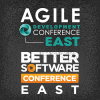Agile Development Conference & Better Software Conference East 2012

PRESENTATIONS
|
Specification-by-Example: A Cucumber Implementation
We've all been there. You work incredibly hard to develop a feature and design tests based on written requirements. You build a detailed test plan that aligns the tests with the software and the documented business needs. When you put the tests to the software, it all falls apart because the requirements were updated without informing everyone. But help is at hand. Enter business-driven development and Cucumber, a tool for running automated acceptance tests. |

Mary Thorn, Deutsche Bank |
|
Sprint Reviews that Attract, Engage, and Enlighten Stakeholders
Are you suffering from chronic disinterest in what your team is delivering? Are your product owners unavailable or distracted? Are your sprint reviews ho-hum experiences with low attendance? If you answered Yes to any of these questions, your agile teams are in trouble-and you need to attend this session. Experienced agile coach Bob Galen explores real-world patterns for how to increase the interest in-and the energy and value of-your sprint reviews. |

Bob Galen, RGalen Counsulting Group, LLC |
|
Test Automation on Large Agile Projects: It's Not a Cakewalk
Automating regression testing on large-scale agile projects with multiple independent Scrum teams is not a cake walk. Because there is no single "test team" that performs all the testing-each Scrum team develops and runs independent tests, gaps arise as different automation implementations spring up. One team adds a new function which breaks automated tests, setting back the progress of other teams. |
|
|
The Enterprise Product Owner: It Takes a Village
In classic Scrum textbooks, the Product Owner (PO) permanently hangs out in the agile team room, churning out a stream of user stories, regularly prioritizing the backlog, deciding color schemes for screen design-all while keeping the team focused and making coffee. In an enterprise agile project, it is physically impossible for one person to do everything the PO role requires. |
|
|
The Journey from Manager to Leader: Empowering Your Team
As I reflect on my struggles empowering teams to become self-managing, I am amazed that I didn't understand earlier. Things that seem so obvious after the fact are often difficult to acknowledge in the moment. I failed to recognize that my extensive experience with risk mitigation was preventing the team from taking risks. Tricia Broderick shares the lessons she learned in her journey from manager to leader. |

Tricia Broderick, TechSmith Corporation |
|
The Lean and Agile Way into the Cloud
Advances in technologies-virtualization, cheap storage, high-speed networks-and a growing comfort with the Internet's security and reliability are leading to widespread adoption of cloud computing. Still, traditional software development methodologies are unable to make full use of the power and flexibility cloud computing offers. Yash Talreja describes how he helped his clients implement lean and agile software development methodologies to take full advantage of cloud computing. |
|
|
The Next Level of Agile: DevOps and Continuous Delivery
Mature agile organizations are introducing continuous delivery as a crucial step to realize their goal of delivering business value rapidly. Andrew Phillips highlights implementation issues about how agile development can fit with enterprise release management policies and governance needs. Andrew outlines proven practices and selection criteria for tools to help you address these issues. |

Andrew Phillips, XebiaLabs Inc. |
|
The Right Question for the Right Requirements
How often have you gone down the road of developing software almost to completion only to discover new requirements that require significant design and coding changes at the last minute? Requirements analysis is not just writing down what customers say they want. It's about digging down and discovering what they need. Without real analysis, our requirements often end up as poorly defined lists, anemic mock-ups, and incomplete or inconsistent models. |
|
|
The Why and How of Usability and User Experience (UX) Testing
Although usability and user experience may seem synonymous, they are separate and much different concepts. While usability is well defined in standards, UX has no agreed upon definition because it relates to a more nebulous attribute-user satisfaction. Both are, however, key ingredients for successful system deployment. Because they don’t know how to measure and evaluate UX, many teams ignore this important attribute until the end of development. |
Philip Lew, XBOSoft |
|
Transitioning to Kanban: From Theory to Practice
You're familiar with agile and, perhaps, practicing Scrum. Now you're curious about Kanban. Is it right for your project? How does Kanban differ from Scrum and other agile methodologies? From theory to practice, Gil Irizarry introduces Kanban principles and explains how Kanban's emphasis on modifying existing processes rather than upending them results in a smooth adoption. Instead of using time-boxed units of work, Kanban focuses on continuous workflow, allowing teams to incrementally improve and streamline product delivery. |
|


